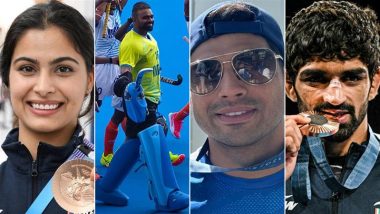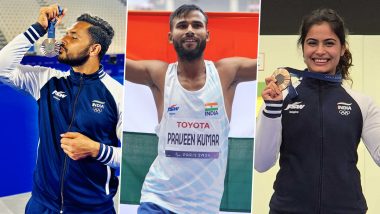Paris, Jan 16 (AFP) The suspicion that World Athletics could ban Nike's Vaporfly shoes over fears they give runners an unfair edge gave a boost to the performance of some of the sportswear giants' rivals on Thursday.
A World Athletics spokeswoman said that a committee composed of officials, athletes, doctors, scientists and legal experts, was still looking at the shoes, which athletes have worn to set a string of records in recent months, but is expected to make recommendations by the end of January.
"The panel is still deliberating but we hope to be able to make an announcement by the end of the month," the spokeswoman told AFP, adding that any changes to the rules would then have to be approved by the World Athletics council.
After renewed speculation on Wednesday that the Vaporfly could be banned, Japanese sports shoe makers Asics, which has launched its own elite running shoe, and Mizuno surged on the Tokyo Stock Exchange on Thursday before sinking back. Asics still closed up 2.52 percent.
Later in Frankfurt, Puma shares jumped more than half a percent in the morning but German rivals Adidas, after an early bounce, fell back.
The basic Nike Vaporfly has a carbon blade in the sole, which stores and releases energy on each step, and air cushions.
On October 12, Kenyan marathon world record holder Eliud Kipchoge broke the two-hour mark for the distance in Vienna wearing a new Vaporfly prototype with three carbon blades in the sole and four air cushions.
The next day, his compatriot Brigid Kosgei broke Paula Radcliffe's women's marathon world record with a time of 2hr 14min 04sec wearing the basic one-blade version that has been available in the shops since 2017.
Kipchoge has responded that he ran the time, not the shoes.
"I trained hard," he told British newspaper the Daily Telegraph this week.
"Technology is growing and we can't deny it - we must go with technology."
"In Formula 1, Pirelli issues the tyres to all the cars but Mercedes are the best one. Why? It's the engine. It's the person.
"It's the person who is running, not the shoe. It's the person driving, not the person making the tyres."
The New York Times analysed statistics from more than a million marathons and half marathon runs since 2014 and calculated that the various Vaporfly models bring, on average, a four percent to five percent improvement in performance, with slower runners showing the biggest gains, around six percent on average. AFP
(This is an unedited and auto-generated story from Syndicated News feed, LatestLY Staff may not have modified or edited the content body)













 Quickly
Quickly




















